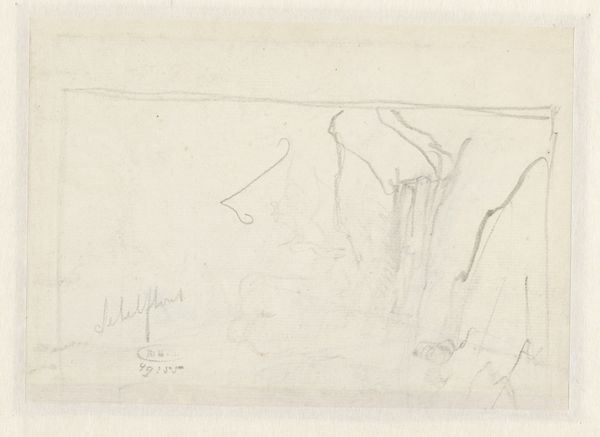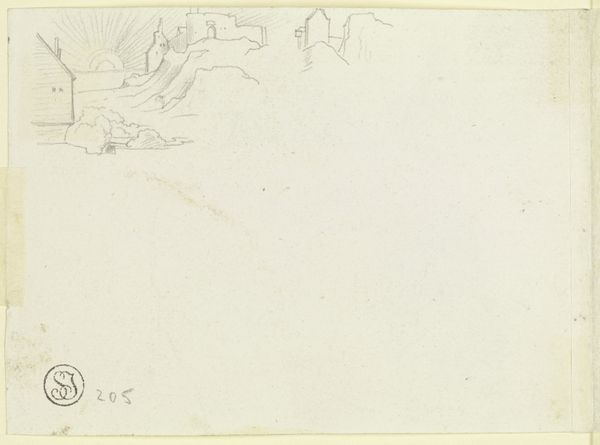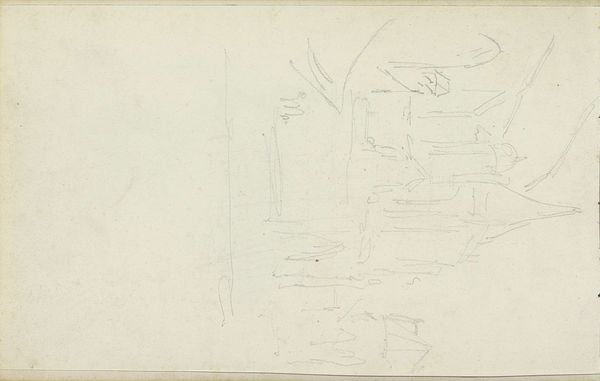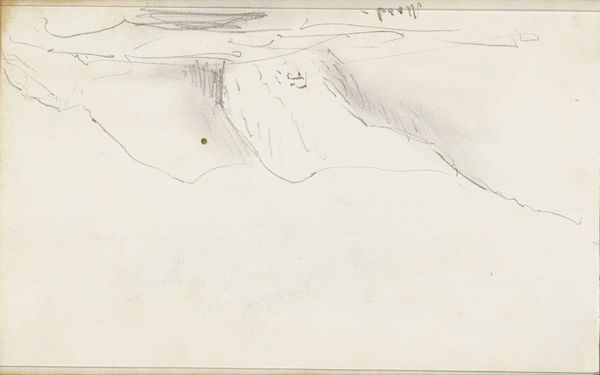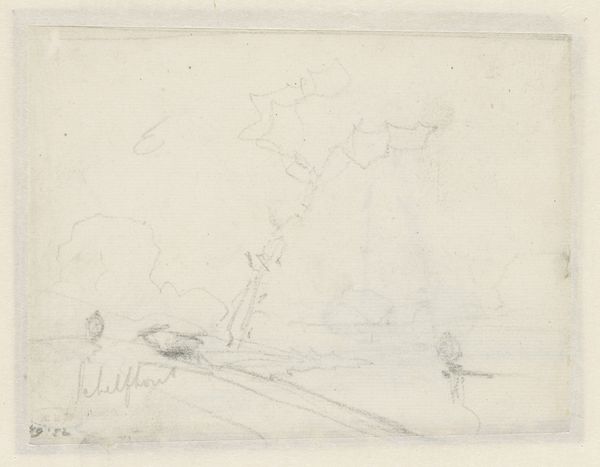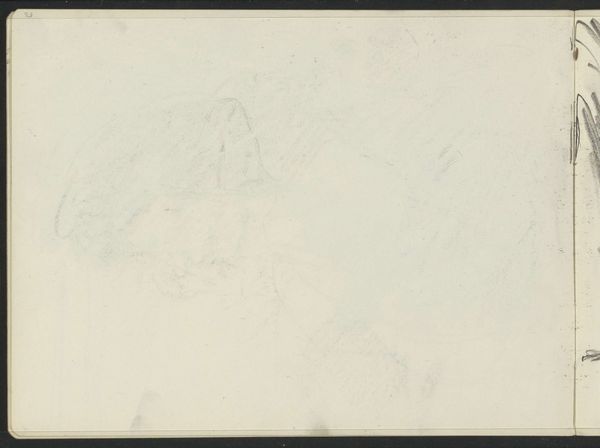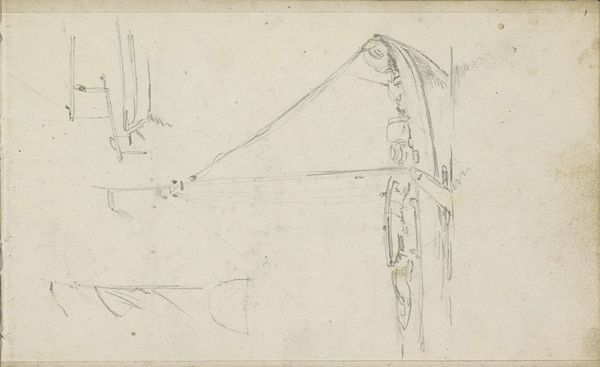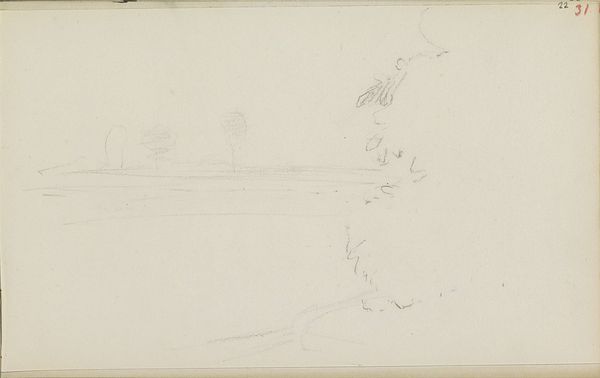
drawing, paper, pencil
#
portrait
#
drawing
#
landscape
#
paper
#
pencil
#
watercolor
Dimensions: height 353 mm, width 251 mm
Copyright: Rijks Museum: Open Domain
Curator: Welcome, everyone. We’re standing before Willem Roelofs's “Sketch of Two Figures,” created sometime between 1832 and 1897. It's currently held here at the Rijksmuseum. Editor: My first impression is one of…ephemerality. It’s so light, almost like a whisper of an image on paper. You can see the sweeping horizontals across the plane, very quietly articulating an atmospheric composition with these gestural clouds floating on top. Curator: Yes, it's fascinating to consider the work in the context of landscape art during that period. Roelofs, a significant figure in the Hague School, aimed to capture the Dutch landscape as it was actually experienced—humble, open, very agrarian. These sketches served to him as quick notes to retain an impression before developing more elaborate landscapes later on. Editor: I agree completely! This piece, however, doesn’t scream social statement; it whispers pictorial ideas. This isn't a carefully crafted painting meant to provoke; the function of the sketch is so different: just a quickly-noted sensation about forms floating in the air, a memory. Curator: But even those sketches offer insight into the visual culture of the period. The clothing, even in this ephemeral sketch, suggests the rising importance of the burgher class and their presence in public life, a shift documented increasingly at the time and made immortal here. Editor: Do you see an intent of “immortality,” though? These sketches feel incredibly transient to me. I am so compelled by the immediacy of this sketch…it transmits a clear sensation through the pencil’s very faint gradations. Even this minimal figuration gives you this feeling of something “felt.” Curator: And, in that feeling, is Roelofs reflecting a change in perception? Was he working against earlier, more contrived landscape representations, bringing more immediate representation to bear in opposition to the prevailing style of grand landscapes? Editor: Perhaps! For me, it's about the act of mark-making. The visual impact of a moment captured quickly... that is all this composition seems to transmit. Curator: This dialogue truly highlights the enduring tension—but also the rich collaboration—between art history and pure formalism. It serves as a reminder of just how rich and generative an artist’s studies can be, which here grants us unique insight into 19th-century life and landscape. Editor: Precisely! The sketch shows the artist's unique impression as captured from life; there are, indeed, multiple ways into these fleeting images and multiple arguments for their significance.
Comments
No comments
Be the first to comment and join the conversation on the ultimate creative platform.
